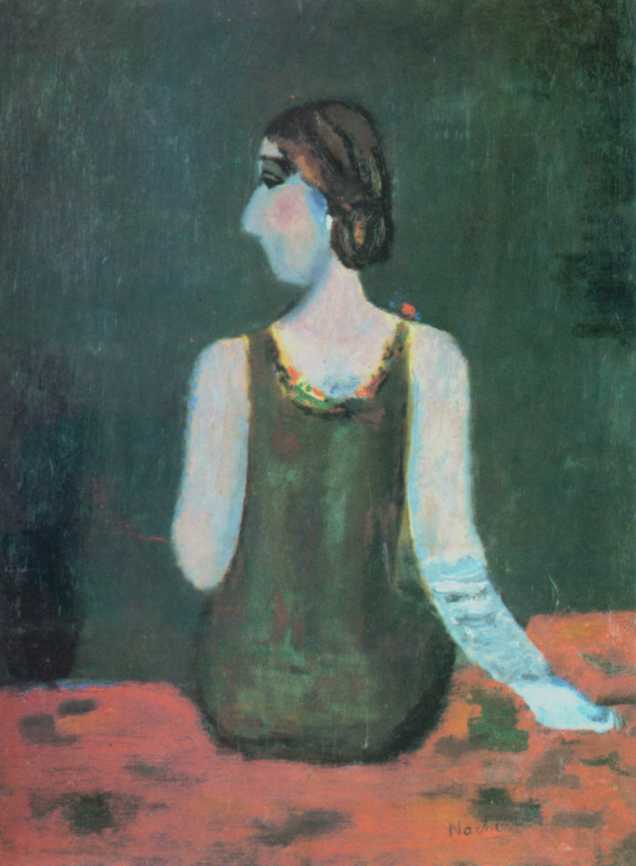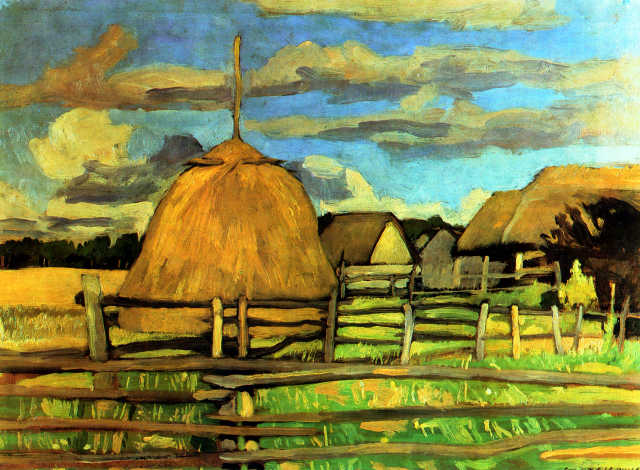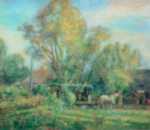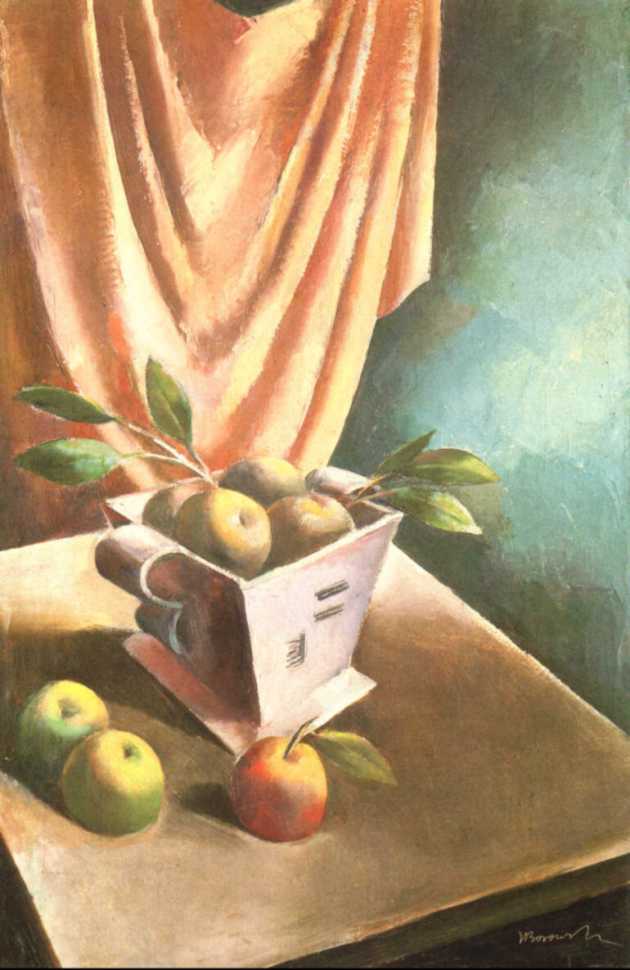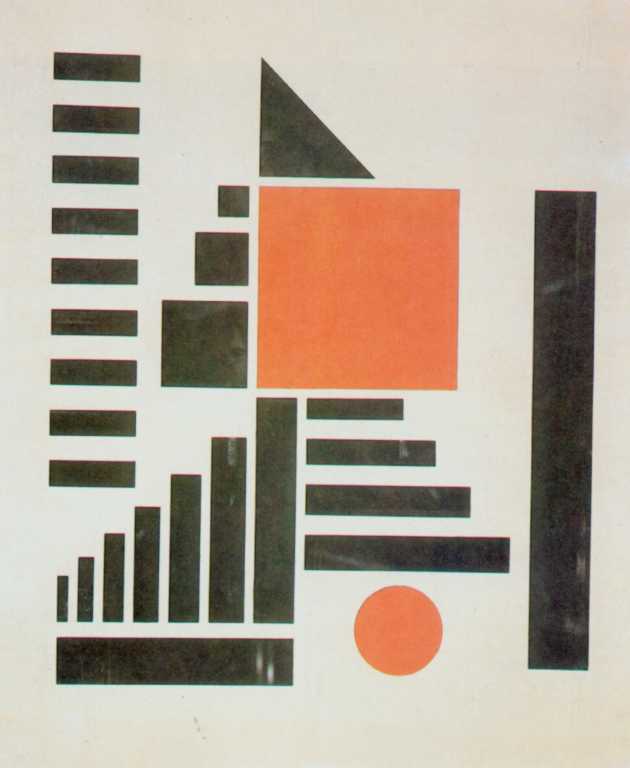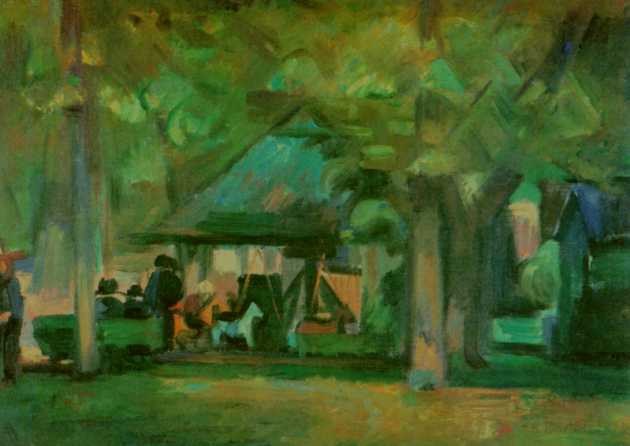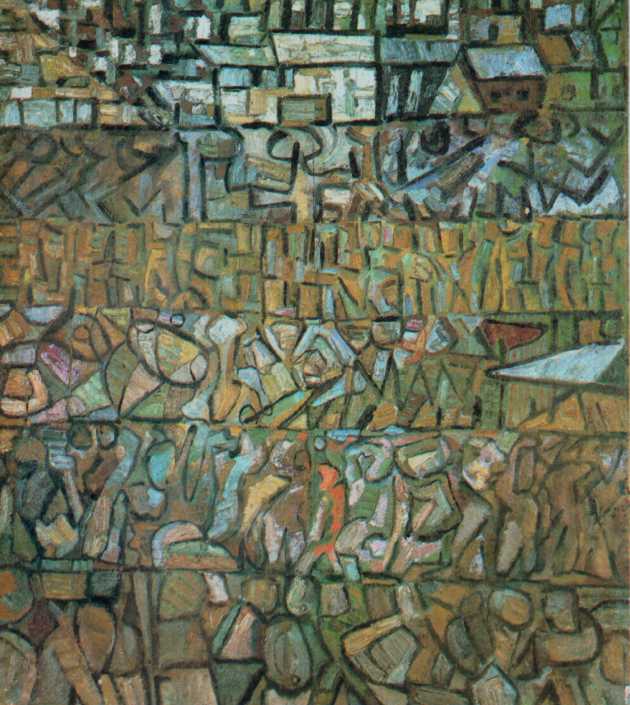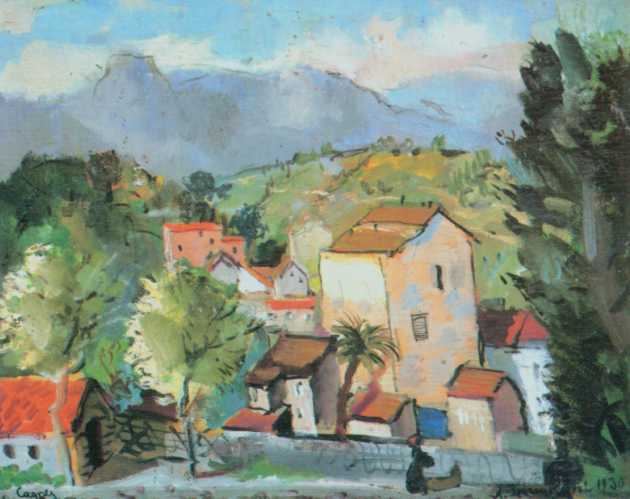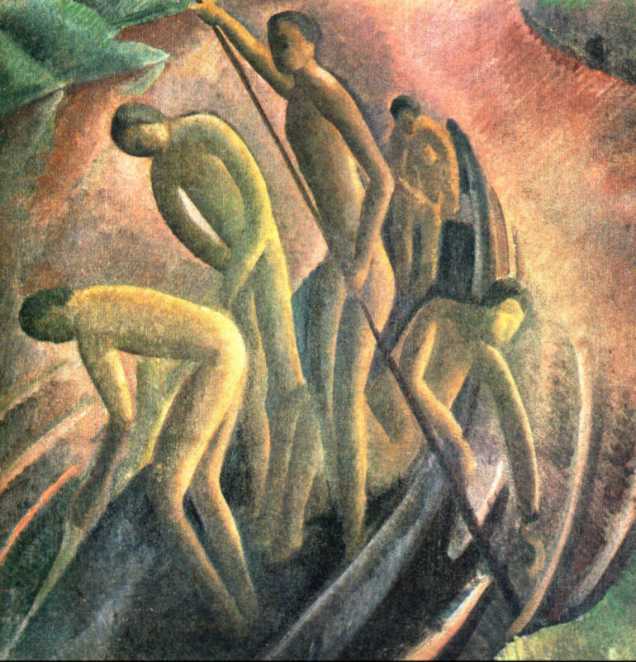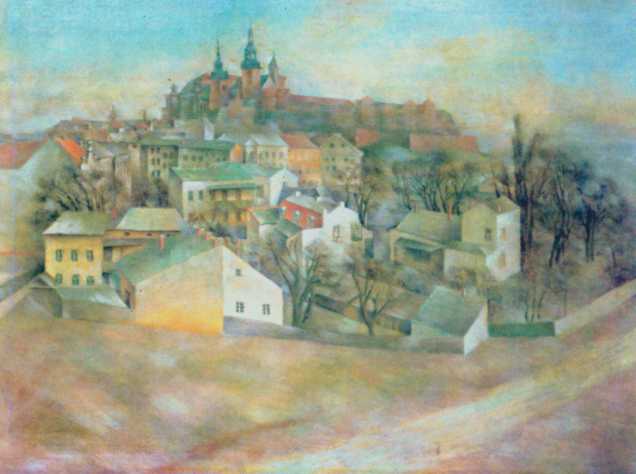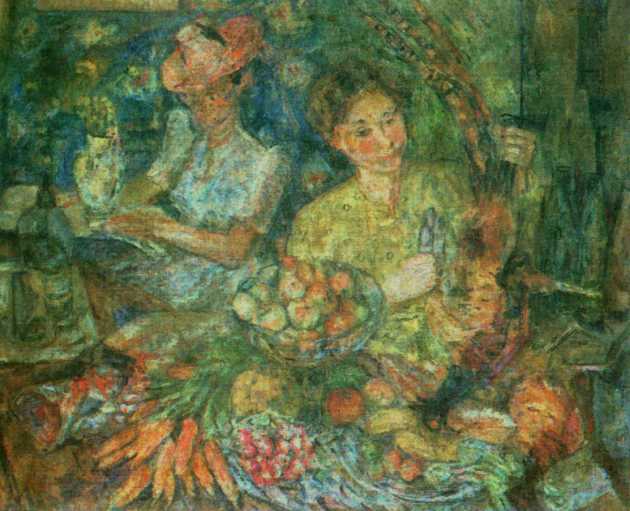Night Samborski Artur Stefan (ur. 1898 Cracow, zm. 1974 Warsaw).
Painter, member of the Paris Committee, pedagogue. He studied at the Academy of Fine Arts in Kraków in 1918-21 under the direction of J.. Mehoffer i W. Weiss, he then stayed for some time in Berlin and Vienna. W 1924 he went with the Kapists to Paris, where he stayed to 1939 r. In years 1947-49 he was a professor at WSSP in Sopot, and from 1949 do 1969 Academy of Fine Arts in Warsaw. In the early period of his work, he was influenced by expressionism, he was not indifferent to the Formist movement. In his works, he tried to combine the hardness of geometric forms with the softness of the human body or plant shapes. In the mid-1920s, color began to play an important role in his painting, treated with great sensitivity and always harmoniously attuned to a clear composition.. In search of the right measure for contradiction, the measures for the element of life and art were connected by the spontaneous artist “throw” sensations on canvas with the logic of construction, highest eye sensitivity with deep culture, sensual beauty with a beautiful thought. Nacht was reluctant to exhibit his works, He never had an individual exhibition. Only in 1977 year, at the great posthumous exhibition at the National Museum in Warsaw, several hundred paintings selected from over a thousand objects from the artist's studio legacy were presented, presented for the first time in a full and comprehensive manner.
Painter, member of the Paris Committee, pedagogue. He studied at the Academy of Fine Arts in Kraków in 1918-21 under the direction of J.. Mehoffer i W. Weiss, he then stayed for some time in Berlin and Vienna. W 1924 he went with the Kapists to Paris, where he stayed to 1939 r. In years 1947-49 he was a professor at WSSP in Sopot, and from 1949 do 1969 Academy of Fine Arts in Warsaw. In the early period of his work, he was influenced by expressionism, he was not indifferent to the Formist movement. In his works, he tried to combine the hardness of geometric forms with the softness of the human body or plant shapes. In the mid-1920s, color began to play an important role in his painting, treated with great sensitivity and always harmoniously attuned to a clear composition.. In search of the right measure for contradiction, the measures for the element of life and art were connected by the spontaneous artist “throw” sensations on canvas with the logic of construction, highest eye sensitivity with deep culture, sensual beauty with a beautiful thought. Nacht was reluctant to exhibit his works, He never had an individual exhibition. Only in 1977 year, at the great posthumous exhibition at the National Museum in Warsaw, several hundred paintings selected from over a thousand objects from the artist's studio legacy were presented, presented for the first time in a full and comprehensive manner.
Nude with the face in the shadow, ok. 1923
oil, canvas, 46 x 73 cm;
National Museum in Poznań;
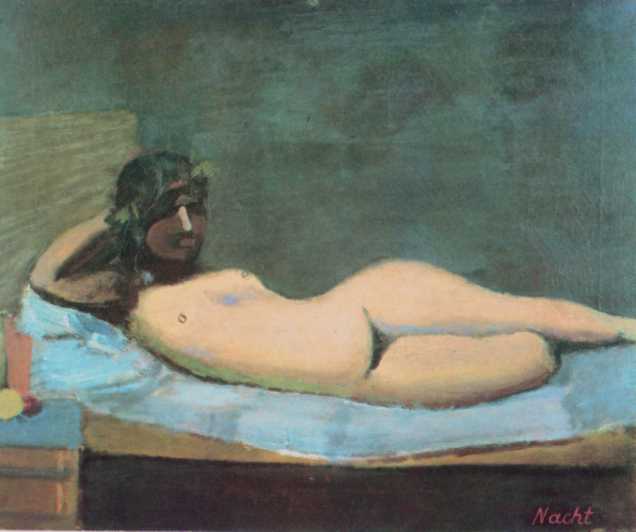
oil, canvas, 46 x 73 cm;
National Museum in Poznań;

landscape of Spain
oil, canvas, 73 x 59,5 cm;
National Museum in Poznań;

oil, canvas, 73 x 59,5 cm;
National Museum in Poznań;

Black flower, ok. 1923
oil, canvas, 54 x 43,5 cm;
National Museum in Poznań;
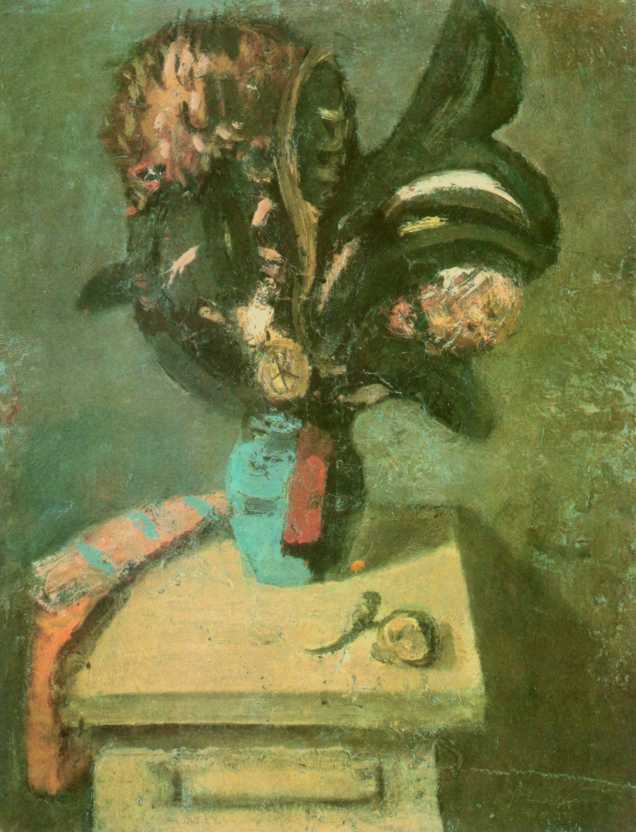
oil, canvas, 54 x 43,5 cm;
National Museum in Poznań;

Portrait of a young woman in a green dress, before 1924
oil, canvas, 60 x 45 cm;
National Museum in Warsaw;
oil, canvas, 60 x 45 cm;
National Museum in Warsaw;
